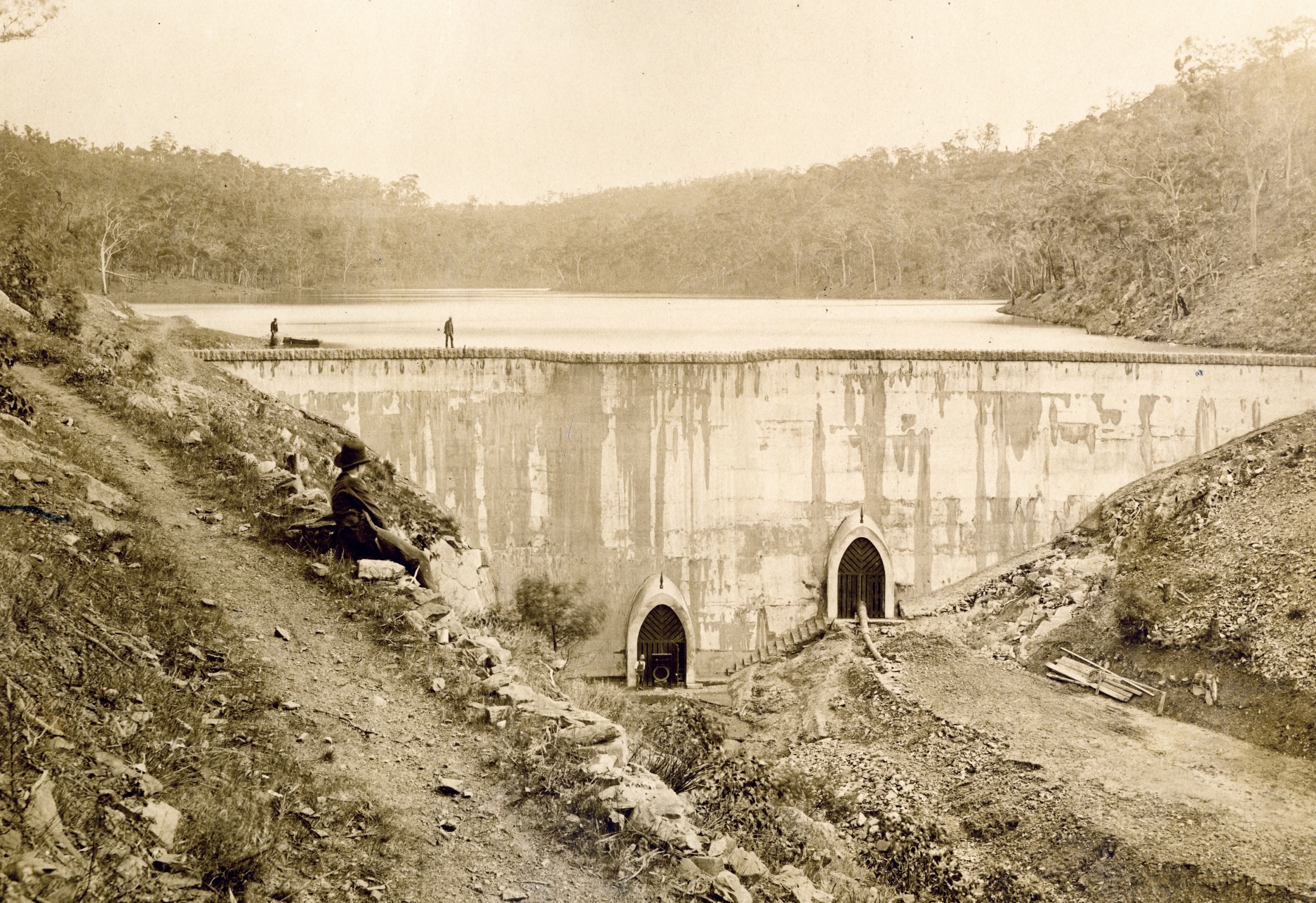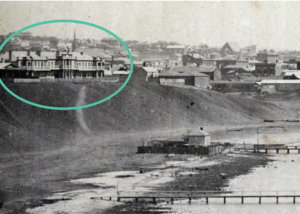
Above: Lower Stony Creek Reservoir 1873. Picture: Barwon Water.
Singapore Terrace, Eastern Beach, March 1862: It wasn’t the rapidity of the explosive flare-up that surprised spectators as much as the intensity of the fire.
A platoon of firefighters and gear – water-carriers, Geelong Volunteer Fire Brigade, Newtown and Chilwell Volunteer Fire Brigade, The Deluge and other engines – couldn’t match the conflagration’s fury.
There was no hope of saving any part of the luxury hilltop condo with its sprawling Corio Bay views. It was a critical turning point in Geelong’s pioneering history.
As this paper reported: “The supply of water by the carriers was by no means adequate and never did we feel more keenly the want of any adequate provision for Geelong in the all-important item of water.”
Singapore Terrace had turned developer Alexander Fyfe a fair profit. It was built in 1855 with of timber imported from the Far East, and considered “the greatest ornament of The Esplanade overlooking the Eastern Beach”.
Its nine buildings were occupied by more than 70 residents in “a respectable sphere of life”. They were people of means and their losses bit deeply into Geelong’s establishment.
The most significant upshot, apart from significant insurance claims, was the reaction of the Geelong Town Council which just two days after the demise of Singapore Terrace, appointed a select committee to figure the best, most economical mode of supplying Geelong with water.

Singapore Terrace, Eastern Beach, Geelong.
This spelt the end for the erstwhile William Gray’s fountain in Market Square, for years serviced by cart then pump and pipes from the Barwon at South Geelong. Gray had a good run, with some interesting clashes with town hall, but eventually found himself up against an intransigent council determined to dismantle his monopoly.
The committee put civil engineer Henry Christopherson to work finding a suitable water supply scheme. He figured the head of Stony Creek, the southern branch of Little River, the best option within a fair cooee of Geelong.
Works started June 1866 and a makeshift town with up to 2000 workers sprung up on the Durdidwarrah site. A similarly-sized township, Viaduct, beside Batesford, had emerged a few years earlier to build the giant Moorabool railway bridge which opened in 1862.

By 1871, the Upper Stony Creek Reservoir was being feted for its “genius” as “a splendid sheet of water, the tunnels, flumes, &c”.
The genius wasn’t especially stable, though, and part of the dam wall subsided with the praise – the crown of the embankment sinking “some 4 ¾ feet in the highest part” and leaving the open aqueduct from the reservoir with the potential for contamination, chiefly rabbit carcasses.
At the time, the dam’s embankment was one of the highest in the world. But it was trimmed down by a thumping 8.5 metres and earth dumped in front to strengthen the works. What was originally meant to hold 2839 megalitres could now only hold 636 megalitres.
Christopherson went broke and, also facing issues with the construction of the Malmsbury water supply, was given the old heave-ho. No doubt a sinking feeling.
Scottish engineer George Tindal Gordon was brought in to build a new dam, the Lower Stony Creek Reservoir. Job was wrapped up in 1875 at a cost of £17,306/12/- about the cost of a modest new car these days.
The Lower Stony Creek Reservoir was feted as a major engineering feat. Here we go again, you might be tempted to think, but wait …
The new job was the first mass concrete gravity dam in Australia and in the southern hemisphere – and the third in the world at the time. Its early use of Portland cement for a substantial construction also incorporated an early utilisation of stability engineering analysis.
It’s still working fine today, as is a third storage built by the newly-created Geelong Waterworks and Sewerage Trust from 1917 in a nearby swamp. Stony Creek’s original embankments were also reinstated.
Barwon Water, by the way, is more than happy to arrange tours for community groups on request. Give them a hoy if you’re keen.
This story appeared in the Geelong Advertiser 26 February 2024.


